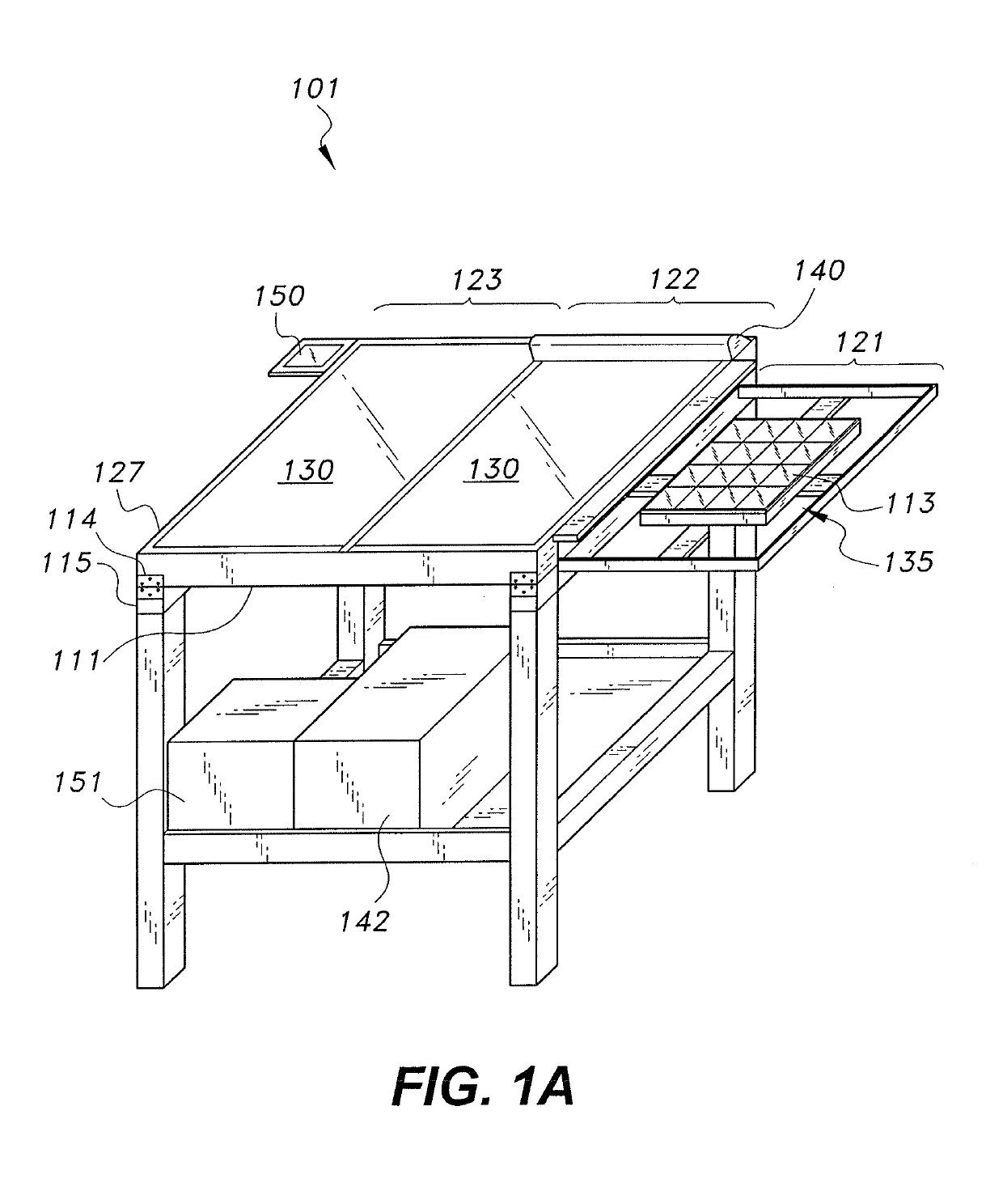Device and method for measuring effect of soiling on photovoltaic device
a photovoltaic device and soiling technology, applied in photovoltaics, photovoltaic energy generation, electrical equipment, etc., can solve the problems of affecting the performance of the device, and affecting the effect of the soiling,
- Summary
- Abstract
- Description
- Claims
- Application Information
AI Technical Summary
Benefits of technology
Problems solved by technology
Method used
Image
Examples
Embodiment Construction
[0015]The device and method for measuring the effect of soiling on a photovoltaic (PV) device includes a device in which a PV device (solar cell, PV module, etc.) may be shifted between partially and fully enclosed compartments in quick succession for measurements of the same device (1) when directly exposed to illumination or solar radiation; (2) when placed under a transparent cover maintained cleared or cleaned of soil; and (3) when placed under transparent cover left exposed to soiling that is not periodically cleaned. The measurements may be of short circuit current (Ise), maximum power (Pmax), and / or other parameters conventionally used to evaluate performance of the PV device. Each measurement may be an instantaneous value, or a measurement of changing values over a predetermined time interval, e.g., an I-V curve. A soiling ratio calculated as:
[0016]SRPmax=1-Pmax2-Pmax3Pmax1
or calculated as:
[0017]SRIsc=1-Isc2-Isc3Isc1
may be used to compare or monitor effectiveness...
PUM
 Login to View More
Login to View More Abstract
Description
Claims
Application Information
 Login to View More
Login to View More - R&D Engineer
- R&D Manager
- IP Professional
- Industry Leading Data Capabilities
- Powerful AI technology
- Patent DNA Extraction
Browse by: Latest US Patents, China's latest patents, Technical Efficacy Thesaurus, Application Domain, Technology Topic, Popular Technical Reports.
© 2024 PatSnap. All rights reserved.Legal|Privacy policy|Modern Slavery Act Transparency Statement|Sitemap|About US| Contact US: help@patsnap.com










